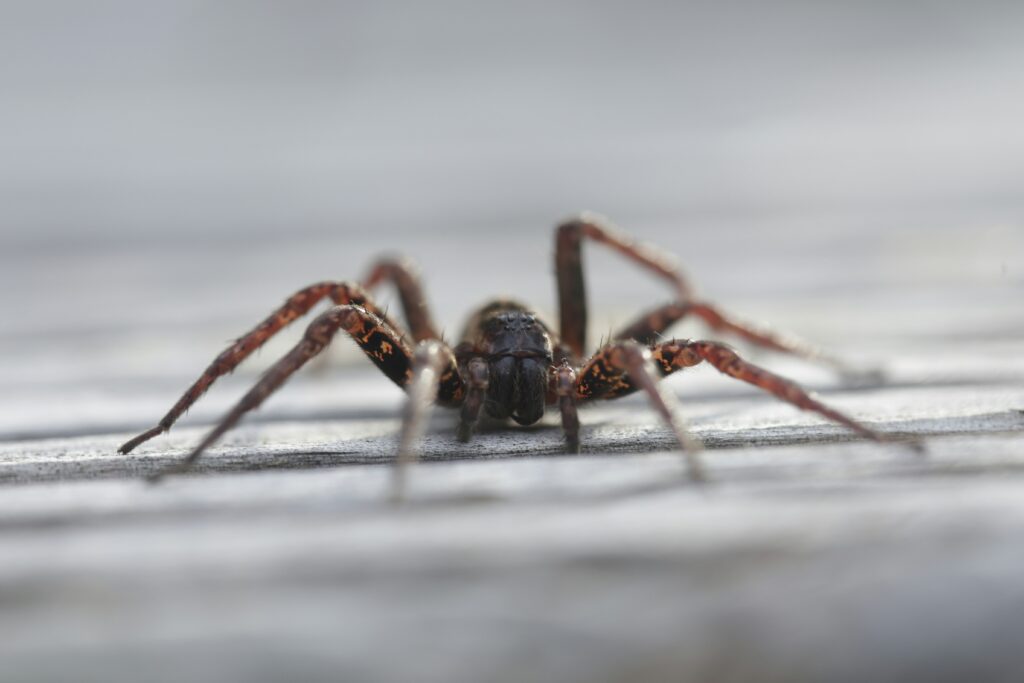Spiders have long been misunderstood creatures, often inspiring fear rather than fascination. While nearly all spiders possess venom—a fact that surprises many—only a small percentage pose any significant threat to humans. This disconnect between perception and reality has created a complex relationship between humans and arachnids, one filled with unnecessary fear and needless killings. Understanding the difference between venomous and truly dangerous spiders not only helps alleviate irrational fears but also promotes appreciation for these remarkable invertebrates that play crucial roles in our ecosystems. This article aims to untangle the web of misinformation surrounding spiders, helping you distinguish which few warrant caution and which many deserve our admiration.
Venom vs. Danger: Understanding the Critical Difference
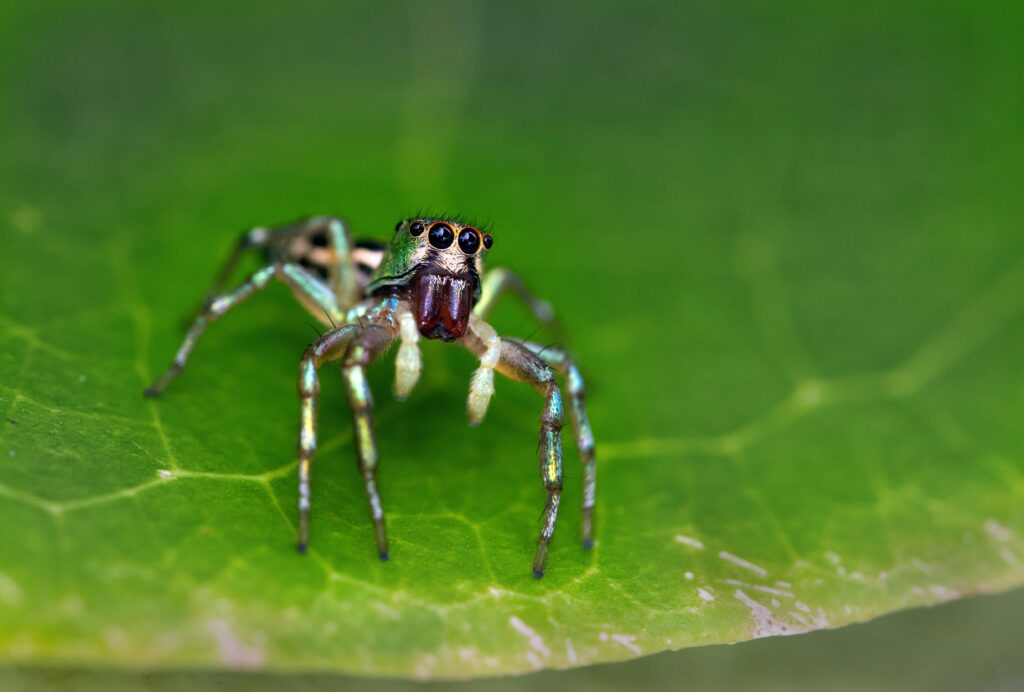
The terms “venomous” and “dangerous” are often used interchangeably when discussing spiders, but they represent distinctly different concepts. Nearly all of the world’s 48,000+ spider species produce venom, which they use primarily to subdue prey—not to attack humans. Venom itself is simply a biochemical tool, and its mere presence doesn’t indicate danger to people. A spider becomes potentially dangerous to humans only when its venom composition is toxic to human physiology, its fangs can penetrate human skin, and its behavior brings it into regular contact with people. The vast majority of spiders fail to meet these three criteria simultaneously, making truly dangerous species exceptionally rare. Understanding this fundamental distinction helps place our relationship with spiders in proper perspective.
The Medically Significant Few: Spiders That Warrant Caution

Among the tens of thousands of spider species worldwide, fewer than 30 are considered medically significant to humans. The widow spiders (Latrodectus species), which include the notorious black widow, contain potent neurotoxins that can cause severe pain, muscle cramping, and in rare cases, more serious complications. Brown recluse spiders (Loxosceles species) possess cytotoxic venom that can cause necrotic lesions in some cases, though such reactions are far less common than popularly believed. The Brazilian wandering spider (Phoneutria species) and Australian funnel-web spiders (Atrax and Hadronyche species) round out the list of spiders with potentially dangerous venom. Even among these species, fatalities are exceedingly rare in regions with access to medical care, and these spiders generally avoid human contact whenever possible.
Black Widows: Reputation vs. Reality

Black widow spiders (Latrodectus species) are perhaps the most recognized “dangerous” spiders globally, instantly identifiable by the red hourglass marking on the females’ abdomens. While their neurotoxic venom is indeed potent—roughly 15 times stronger than rattlesnake venom by volume—the reality of black widow encounters differs significantly from their fearsome reputation. These spiders are shy, non-aggressive, and typically bite only when directly threatened or accidentally pressed against skin. Furthermore, they often deliver “dry bites” with little or no venom injected. Deaths from black widow bites are extraordinarily rare in the modern era, with effective antivenom readily available in most regions where these spiders are common. Despite their potential for causing significant pain, black widows are actually timid creatures that prefer solitude over confrontation.
Brown Recluse: Separating Myth from Medical Fact

Few spiders are surrounded by as much misinformation as the brown recluse (Loxosceles reclusa) and its relatives. These medium-sized brown spiders with a distinctive violin-shaped marking have become scapegoats for unexplained skin lesions far outside their native range. Scientific studies have consistently shown that brown recluse spiders have a limited distribution in the United States, primarily in the central and southern Midwest, yet “brown recluse bites” are frequently misdiagnosed across the country. Genuine bites can indeed cause necrotic lesions in some individuals, but the majority result in minor symptoms that resolve without intervention. Their name “recluse” accurately describes their behavior—they actively avoid human contact and bite only when trapped against skin. The exaggerated fear of these spiders has led to countless cases of misdiagnosis and unnecessary treatment for conditions entirely unrelated to spider bites.
Sydney Funnel-web Spiders: Australia’s Legitimate Threat
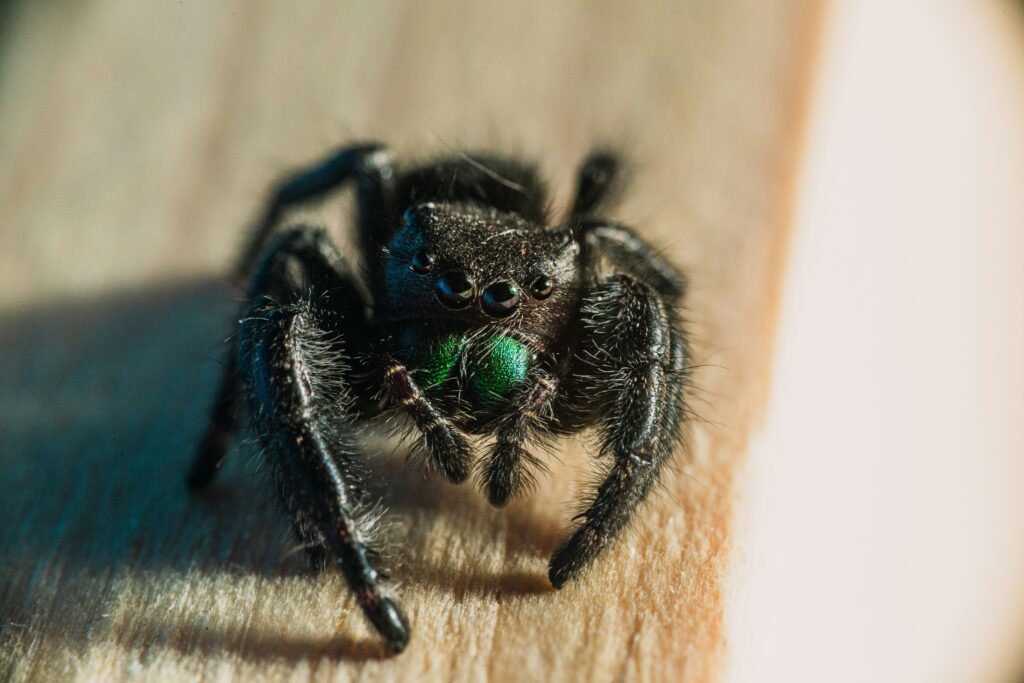
The Sydney funnel-web spider (Atrax robustus) and its relatives represent one of the few spider groups that deserve their fearsome reputation. These large, glossy black spiders possess venom containing a compound called delta-atracotoxin, which can cause severe symptoms in primates specifically, making them uniquely dangerous to humans. Unlike many dangerous spiders, male funnel-webs can be aggressive when threatened, rearing up and displaying their fangs before striking repeatedly. Before the development of antivenom in 1981, these spiders were responsible for 13 confirmed human deaths. Today, with prompt medical treatment, fatalities have been eliminated entirely. Despite their potential danger, these spiders remain ecologically important and typically only encounter humans when males wander in search of mates during the breeding season or after heavy rains force them from their burrows.
The Harmless Majority: Common Spiders That Pose No Threat

The overwhelming majority of spiders encountered in and around homes worldwide are completely harmless to humans, despite their sometimes intimidating appearance. Common house spiders, jumping spiders, orb weavers, and wolf spiders all possess venom too weak to cause meaningful harm to humans, and many cannot even pierce human skin with their tiny fangs. These beneficial arachnids consume significant numbers of pest insects, including mosquitoes, flies, and agricultural pests, providing natural pest control services estimated to be worth billions of dollars annually. Garden spiders like the striking yellow and black Argiope species not only control pest populations but also create spectacular geometric webs that have inspired artists and engineers alike. Far from being threats, these common spiders deserve protection as valuable allies in both natural and agricultural ecosystems.
Jumping Spiders: The Charismatic Ambassadors
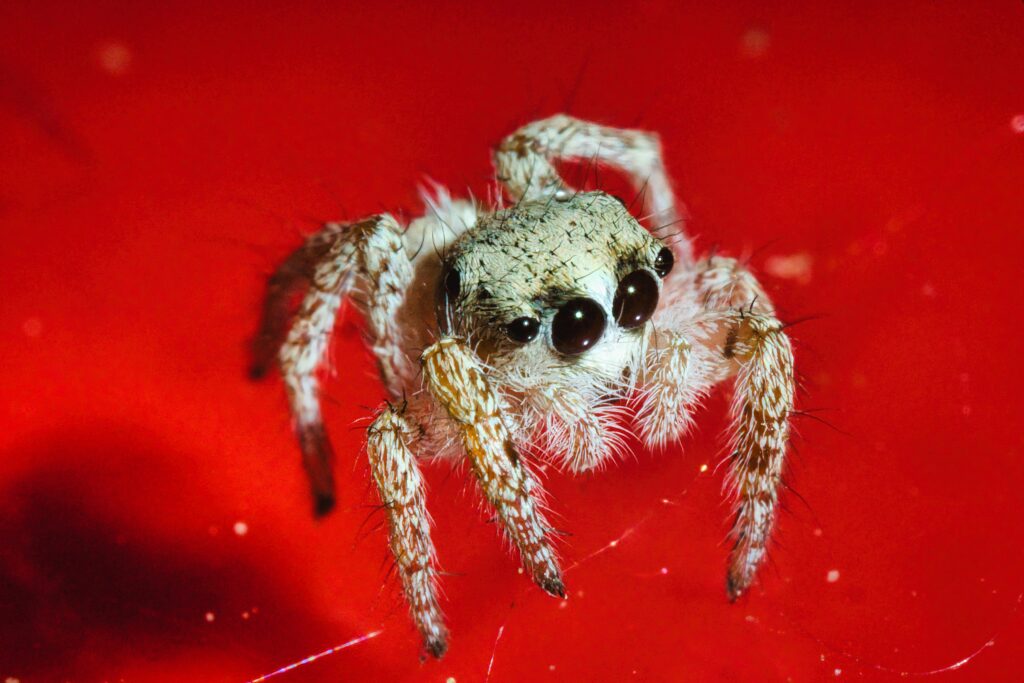
Jumping spiders (family Salticidae) represent some of the most charismatic and endearing members of the spider world, often converting even dedicated arachnophobes into spider enthusiasts. These small, fuzzy spiders possess remarkable intelligence, complex courtship behaviors, and the best vision of any invertebrate, with their large forward-facing eyes giving them an almost puppy-like appearance. Unlike web-building spiders, jumping spiders actively hunt their prey using cat-like stalking and pouncing techniques, capable of leaps up to 50 times their body length. Their curious nature often brings them into harmless interactions with humans, where they may observe people with obvious interest or even wave their pedipalps in what appears to be greeting. Though they possess venom for subduing prey, their tiny fangs and mild venom make them entirely harmless to humans, making them perfect ambassadors for appreciating spider diversity.
Tarantulas: Gentle Giants with an Unfair Reputation
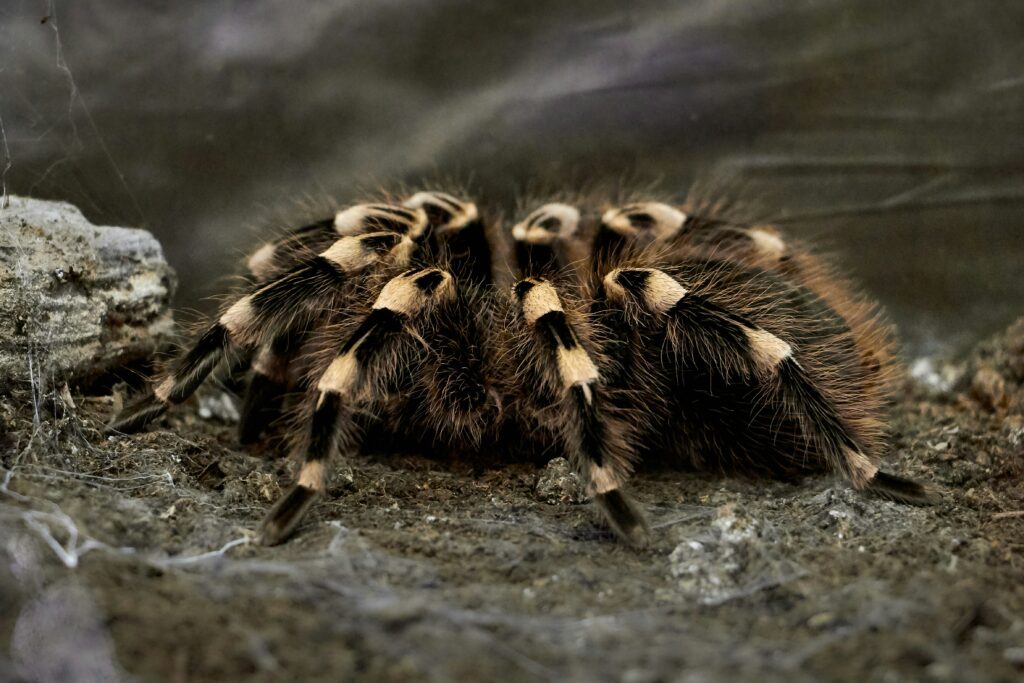
Despite being portrayed as deadly menaces in countless films and television shows, tarantulas rank among the least dangerous spiders to humans. These large, hairy spiders possess relatively mild venom typically no worse than a bee sting, and most species display docile temperaments that have made them popular exotic pets. Rather than using venom as their primary defense, most tarantulas rely on urticating hairs—specialized barbed hairs on their abdomens that they can kick off when threatened, causing skin and eye irritation to potential predators. The most defensive behaviors are typically seen in Old World tarantula species, which lack urticating hairs and may be more likely to stand their ground when threatened. Far from being aggressive killers, most tarantula species are slow-moving, shy creatures that retreat when confronted and would much rather flee than fight when encountering humans.
Wolf Spiders: Maternal Champions and Harmless Hunters
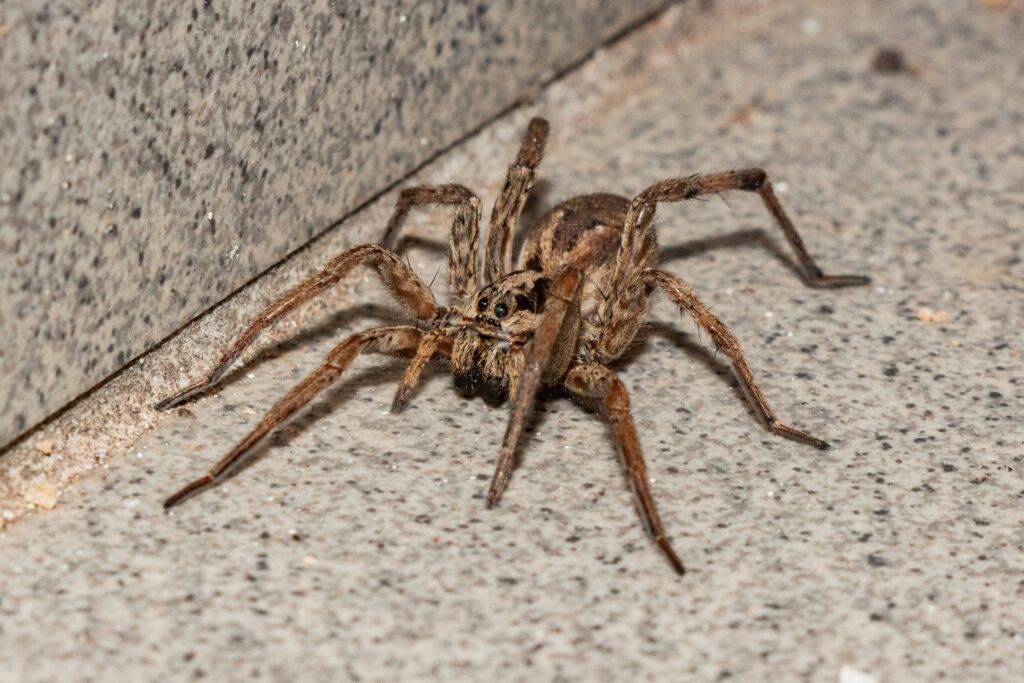
Wolf spiders (family Lycosidae) exemplify the disconnect between appearance and actual danger in the spider world. These large, swift-moving ground hunters with prominent eyes often trigger fear reactions, yet they represent no meaningful threat to humans. Wolf spiders possess remarkable maternal behaviors that set them apart from many other arachnids—females carry their egg sacs attached to their spinnerets and, after hatching, carry dozens of spiderlings on their backs for protection until the young are ready to disperse. Their venom, while effective against insect prey, causes only minor localized pain and irritation in the rare instances when they bite humans defensively. These beneficial predators control pest populations in gardens and agricultural settings, consuming significant numbers of potentially harmful insects without building webs that might inconvenience humans.
Spider Identification: Keys to Accurate Recognition

Properly identifying spiders represents a crucial skill for distinguishing potentially dangerous species from harmless ones, yet misidentifications remain extremely common. Rather than focusing solely on color, which can vary widely within species, reliable identification depends on recognizing key anatomical features, eye patterns, and distinctive markings. Black widows are identified by their globular shiny black bodies and red hourglass marking, while brown recluses feature a distinctive violin-shaped marking pointing toward the abdomen and have exactly six eyes arranged in three pairs (most spiders have eight eyes). Size comparisons can be misleading due to perspective issues in photographs, making it important to include reference objects when documenting spiders for identification. Regional distribution also provides critical context—many feared spiders have limited geographic ranges, making identification claims outside these areas highly suspect without extraordinary evidence.
Spider Bites: Separating Fact from Fiction

Spider bites are vastly overdiagnosed by both the public and medical professionals, with studies consistently showing that most suspected “spider bites” are actually other conditions entirely. Genuine spider bites typically produce two small puncture marks, localized pain, and redness, though significant variation exists depending on the species involved and individual reactions. Bacterial infections (particularly MRSA), allergic reactions to arthropods like ticks and mites, and various dermatological conditions are frequently misattributed to spiders, particularly when no spider is observed inflicting the bite. Research indicates that spiders rarely bite humans except when trapped against skin, such as being pressed in clothing or bedding, and almost never bite unprovoked. This misattribution problem has real consequences, potentially delaying proper treatment for serious conditions like skin infections while focusing blame on beneficial creatures that were never involved in the first place.
Living with Spiders: Practical Coexistence Strategies

Coexisting peacefully with spiders benefits both humans and these important predators, requiring neither extreme fear nor complete indifference to potential risks. In regions with medically significant species, simple precautions include shaking out shoes and clothing before wearing them, keeping beds away from walls, using gloves when handling stored items or working in areas where reclusive spiders might hide, and sealing home entry points to reduce unwanted indoor visitors. For the vast majority of harmless spiders, the best approach is simply to leave them alone or gently relocate them outside using a cup and card if their presence is unwelcome. Chemical controls should be used sparingly, if at all, as they often impact beneficial species while potentially creating health risks for humans and pets. Remember that spiders generally prefer avoiding humans entirely, and most species found indoors are harmless opportunists simply seeking shelter and insect prey.
Conservation Concerns: Protecting Misunderstood Predators

Spiders face numerous conservation challenges despite their ecological importance, with habitat destruction, pesticide use, and climate change threatening many species worldwide. Several tarantula species appear on endangered species lists due to habitat loss and over-collection for the pet trade, while countless less charismatic species likely face extinction before they’re even properly documented by science. Widespread arachnophobia contributes to conservation challenges by reducing public support for spider protection and encouraging indiscriminate killing. Yet spiders serve as crucial indicator species for ecosystem health, with their presence or absence reflecting broader environmental conditions. Conservation efforts benefit from educational initiatives that highlight spiders’ ecological roles and remarkable adaptations, gradually shifting public perception from fear to fascination. By protecting these ancient predators, we maintain critical components of functioning ecosystems that ultimately benefit human interests as well.
Understanding the true nature of spiders—separating the handful of potentially dangerous species from the vast majority of beneficial ones—represents an important step toward a more balanced relationship with the natural world. While reasonable caution around certain species remains prudent, particularly in regions where medically significant spiders are native, the widespread fear of all spiders proves both unwarranted and counterproductive. These eight-legged marvels have evolved remarkable adaptations over more than 380 million years, developing diverse hunting strategies, complex behaviors, and important ecological roles that deserve our respect and protection. By moving beyond irrational fear toward evidence-based appreciation, we not only improve our own quality of life but also contribute to the conservation of these fascinating creatures that have shared our planet since long before humans appeared.

